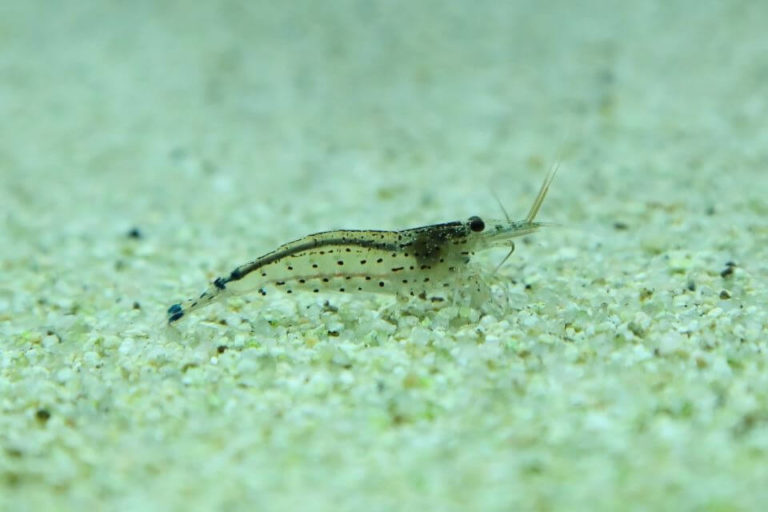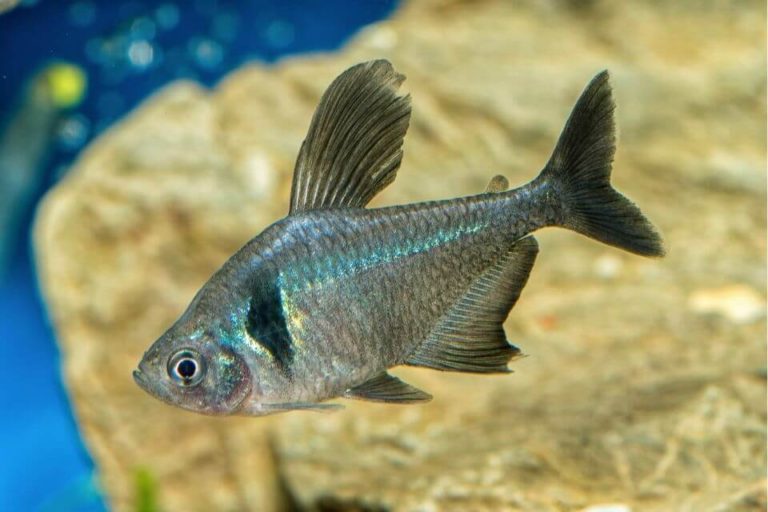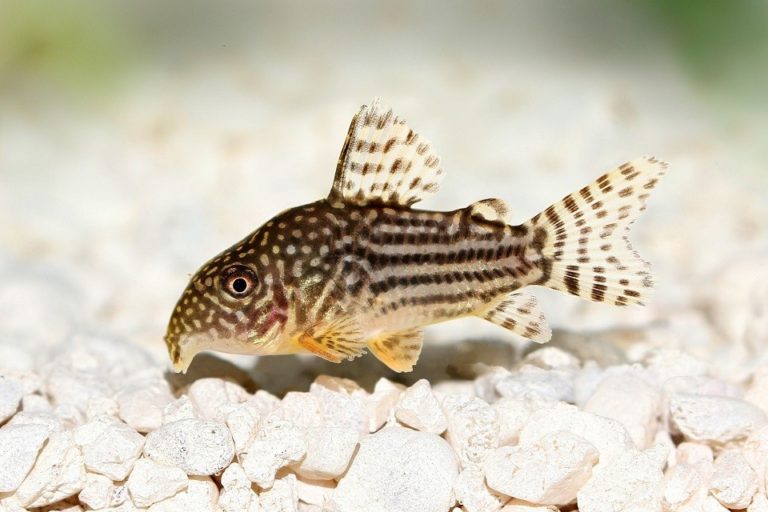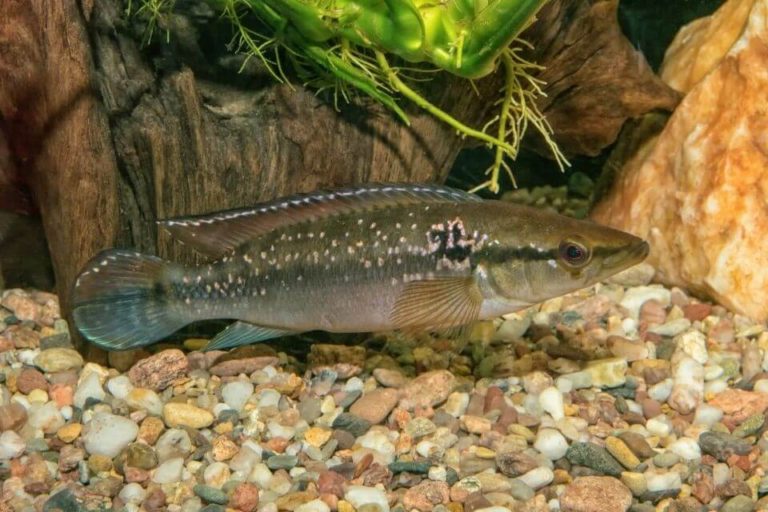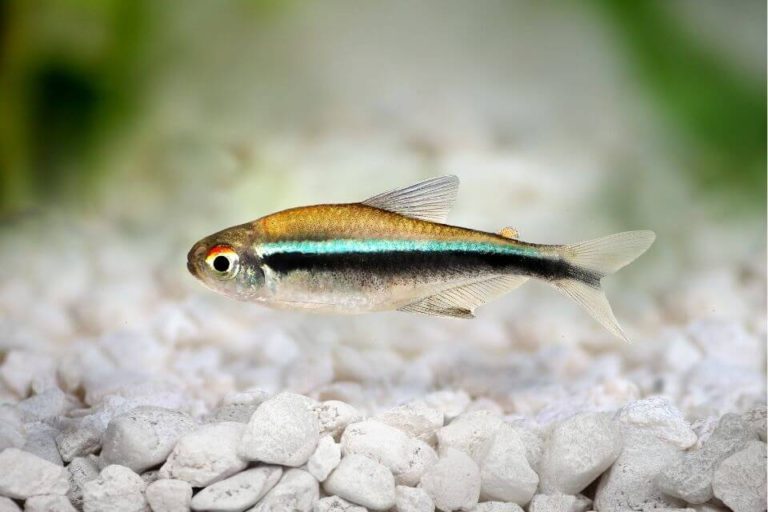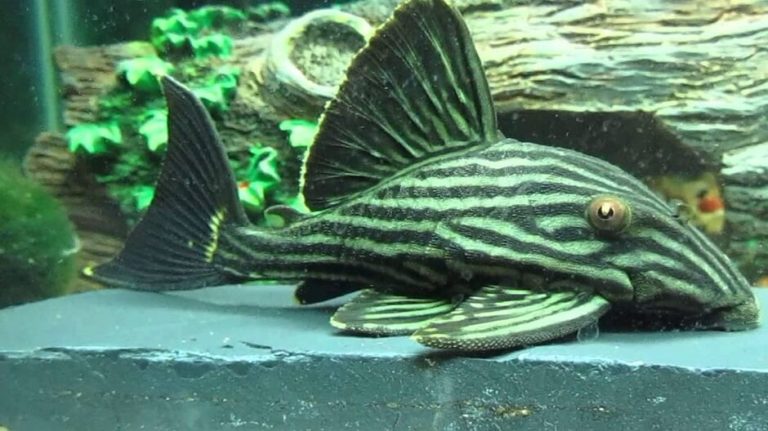Honey Gourami Care Guide: Lifespan, Size, Diet, Tank Size & Tank Mates

The Honey Gourami is one of the most bight-colored gourami species that you can keep in your freshwater tank.
Have you adopted fishkeeping as a hobby? You’d better consider housing this magnificent Honey Gourami species that shines your tank.
This Gourami fish is hardy and easy-to-maintain freshwater fish species that are ideal for novice fishkeepers. This stunning honey-hued fish species is a beautiful addition to your freshwater aquarium.
In this Honey Gourami care guide, we provide you with the useful information required to keep this spectacular fish species. From tank conditions, set up, and dietary requirements.
You will also learn about their temperament and suitable tankmates.
| Quick Facts: | |
|---|---|
| Common Names | : Honey Gourami, Honey Dwarf Gourami |
| Scientific Name | : Trichogaster chuna |
| Family | : Osphronemidae |
| Origin | : Rivers and lakes in India and Bangladesh |
| Care Level | : Beginner |
| Lifespan | : 5 - 8 years |
| Size (average) | : 2 inches long |
| Diet | : Omnivores |
| Breeding | : Egglayer |
| Social | : Shoaling fish |
| Temperament | : Peaceful |
| Minimum Tank Size | : 10 gallons |
| Temperature | : 71 - 82 °F (22 - 28 °C) |
| Water Hardness | : 4 - 15 dGH |
| Water pH Level | : 6 - 7.5 |
Overview of Honey Gourami
Trichogaster chuna is the scientific name for this Gourami fish. This vibrant fish species also goes by the name Honey Dwarf Gourami.
This species is a peaceful fish that can be kept on its own, but Honey Gourami loves the company of its fellow species, so it’s best kept in groups of 4 to 6.
However, when protecting the fry, the male Honey Gourami is aggressive even toward the female. This Gourami fish is highly sought after in the aquarium market because of its vibrant colors and peaceful temperament.
Do not confuse this fish species with Sunset Gourami because the appearance pretty much looks similar, but this Gourami fish is smaller species than Sunset Gourami fish.
Honey Gourami Size
The tank conditions and healthy diet determine your Honey Gourami size, so provide your fish with a healthy diet and excellent housing conditions.
Honey Gourami fish is the smallest fish in the Trichogaster family, with the adult male growing up to 1.5 inches and female Honey Gourami size up to 2 inches. In rare conditions, this fish can get up to 3 inches.
Honey Gourami Lifespan
Honey Gourami is a worthy investment for every fishkeeper because it can live for up to 8 years when exposed to optimal conditions and a balanced diet. With 5 being the least number of years.
Although they are hardy and easy to look after, it doesn’t mean that they are without their vulnerabilities, so follow this guide, and you are assured that your fish will be around for a long time.
Honey Gourami Typical Behavior
Honey Dwarf Gourami is a peaceful and hardy fish ideal for novice aquarists. They are timid and shy, so you will never find them attacking their tankmates.
Their introverted nature makes it challenging for this fish to get used to your tank, and their coloring takes time to appear. But once they are adjusted and happy, their honeyed hues start to show.
Although they are timid, they love the company of their own kind; that is why it’s advisable to keep a minimum of 4 to 6 Honey Dwarf Gourami fish together.
This fish species love staying in a group. The group establishes a hierarchy where the dominant fish are tasked with chasing away other fish during meal times.
At times the male fish will show aggressive tendencies towards the females, especially when protecting the fry. Provide a lot of vegetation that will serve as hiding places.
Honey Gourami fish is omnivorous, thus feeds on both plants and meat. In the wild, this species has a peculiar feeding habit where it catches its insects by squirting water at them and then snatching them after they fall onto the water.
This fish sticks to the top part of the tank because of its Labyrinth organs, which have a constant oxygen supply.
Honey Gourami Appearance and Colors
Honey gourami fish has a unique color, fins, and body structure that makes it stand out in the aquarium. As the fish adjusts to your tank and is happy, its beautiful hues start to show.
When choosing their tank mates, choose peaceful and almost the same size because big and aggressive tankmates will harass and make them shy and nervous, thus forcing them into hiding.
This fish species has an orange-colored body and grows up to 2 inches (5 centimeters). And like many other Gourami species, Honey Gourami males have brighter colors than females.
As they grow, the males have different hues from the females. Initially, the fish has silver-gray to light yellow shades with a brown horizontal stripe that starts from behind the eyes and extends to the caudal peduncle.
The adult male’s color then changes to bright reddish-yellow or honey yellow.

You will also notice that the face, throat, and underbelly of the male fish develop a blue or black hue. At the same time, the females stay with the same shade throughout their life.
The males become brighter during breeding, especially near the throat area, and the undersides become darker. This beautiful contrast helps capture the attention of the females. The tankmates, diet, and tank conditions influence this fish coloration. Therefore, provide Honey Dwarf Gourami with excellent tank conditions, a healthy balanced diet, and peaceful tank mates.
Honey Gourami has a narrow body with small dorsal and anal fins, while the ventral fins are narrow and shaped like a thread.
Aquarium Care and Conditions for Honey Gourami
You must adhere to the tank conditions and specific provisions of Honey Gourami fish when setting up your tank. This ensures optimal growth, full-color development, healthy, and long life for your fish.
When setting up your aquarium, make sure that the tank conditions mimic their natural habitat. Honey Gourami is a freshwater fish found in the Indian region, particularly, northeastern parts. It is found in slow-moving rivers, streams, lakes, and ponds.
The water bodies are poorly mineralized and have thick vegetation that serves as a hiding place for this timid fish species. The floor of the water bodies is composed of a sandy substrate with rocks and logs.
You will often find this beautiful fish swimming in the middle and upper part of your fish tank. Although Honey Dwarf Gourami is a hardy fish, it is susceptible to water changes, especially from June to October.
So, provide your fish with a warm environment where the water temperature ranges between 71 and 82 degrees Fahrenheit. Use a water heater during the cold months. Since they are shy and timid, introduce enough plants in your tank.
Leave about 3 inches at the top without water to give Honey Gourami enough space to breathe fresh air at the water surface.
Honey Gourami is easy to look after because it is a hardy fish that withstand a wide range of water conditions. With that being said, your aim should be to provide your fish with excellent care and tank conditions, as they are not invincible.
Honey Gourami Tank Size
A single fish occupies a 10 gallons tank. And since Honey Gourami fish loves staying in a group, you will need to adjust your tank size to keep more and even add tankmates.
If you want to keep two Honey Gourami, consider using a 20 gallons tank and for every extra fish, add 5 gallons. This ensures that your fish have enough space to swim around and minimizes chances of fights over territory with their tankmates.
Honey Gourami Tank Setup
When setting up your tank for Honey Gouramis, adhere to the following specifications:
Lighting: Honey Gouramis will thrive under normal to moderate lighting. Therefore, outfit your aquarium with a lighting system. On a closer look, the light amplifies the beautiful shade of your Gouramis.
Substrate: These fish species live in the middle and upper part of the tank, but this does not mean that you don’t consider the substrate when setting up.
Honey Gourami is susceptible to Hexamitiasis disease caused by a protozoan parasite found in the substrate. Therefore, source your sandy substrate from reputable suppliers.
Decorations: Despite being shy and timid, Honey Gourami fish is a very active fish, so decorate the tank with logs, woods, rocks to keep it busy. And do not forget plants.
Suitable Plants
If you put your Honey Gourami in a tank without plants, the chances of them feeling unsafe and stressed are high, which will have a negative effect on their well-being and lifespan.
Introduce different plants in the tanks, the likes of Hornwort and Water Wisteria. They act as hiding space, and when hungry, the fish can nibble on them.
Water Temperature and Parameters
Like every other freshwater fish species, Honey Gourami fish thrives in clean water conditions. So providing your Honey Gourami with excellent water conditions translates to having the best living environment.
Although this fish species gives you plenty of wiggle space when it comes to water parameters, try as much as possible to maintain the temperatures within the acceptable range because their Labyrinth organ is sensitive to changes in water temperatures.
– Water temperature
Honey Gourami’s native habitat comprises warm water. Therefore, this fish species is sensitive to cold temperatures, so ensure that the water temperature stays within the range of 71 to 82 degrees Fahrenheit (22 to 28 °C). If the room is cold, outfit your aquarium with a heater to raise the temperature.
– Water Acidity
Most freshwater fish prefer water with neutral acidity, and Honey Dwarf Gourami is not an exception. Therefore, maintain the water pH between 6 and 7.5.
– Water Hardness
This hardy fish can survive in water with a hardness level ranging from 4 to 15 dGH (Degree of General Hardness).
– Testing Water
After setting up your tank, conduct a series of tests for the next two to three weeks before declaring your tank is ready to host your Honey Gourami. You can buy the test kits from the local pet store or online. Water testing is a consistent action that you will have to stick to even after introducing your fish to the tank.
Diet and Feeding for Honey Gourami
When it comes to feeding for this species, it is essential to provide them with nutritious food varieties to maintain their coloration and healthy lifestyle for years to come.
What does Honey Gourami Eat?
Honey Gourami is omnivorous, meaning it eats both meat and plant matter. In their natural environment, Honey Dwarf Gourami feeds on small invertebrates, insects, and zooplankton.
Sometimes they will snack on the vegetation and plants. So when introducing aquarium plants, keep this in mind.
Honey Gourami is not a picky eater. That being said, you must create a healthy meal plan for your fish, whereby you include dry, live, and frozen food. By doing this, not only do your fish get healthy nutrition, but it also keeps them happy.
Their food comprises:
- Flakes and pellets
- Frozen meat
- Plants
- Vegetables (lettuce, zucchini)
- Live food (bloodworm, brine shrimp)
Plan the fish diet such that after every few days, you will supplement the dry foods and plant matter with meat to give them a balanced diet.
Wash the vegetables before feeding your fish to avoid introducing harmful substances in your fish tank and keep the dry food in an airtight container to prevent contamination. For live food, buy from reputable suppliers, or breed your own.
Note: Please pay close attention to your fish to ensure that the diet is not making them sick.
Feeding habits
You can feed your Honey Gourami one or two times a day, in the morning and evening. Put enough food in the tank that they can finish in five minutes; any more than that will affect the tank’s ecosystem.
Common Diseases of Honey Gourami
Even though they are a hardy fish species, they are not invincible. Like any other freshwater fish, they are susceptible to tissue damage because of unclean water. So make sure that you change 25% of the water every week.
Honey Gourami is also assailed by other common diseases such as
Velvet Disease
This is a disease caused by a parasite named Oodinium pilularis. The parasites thrive in poorly maintained tanks and are found in the fish’s fins, gills, skin, and mouth and form a speck of golden brownish dust.
Ich
Also known as white spot disease. It occurs because of poor tank and water conditions. You will observe white dots on the body of your fish. And if you keep a close eye, you will find your fish scratching itself against plants or the tank’s surface.
Constipation
If you feed your feed the wrong diet, there are high constipation chances, especially frozen food. So mix it up with vegetables, dry, and live food to avoid constipation.
Hexamitiasis
It is also referred to as Hole in the Head. This disease is caused by a parasitic protozoan known as Hexamita. This parasite grows in your tank if the substrate is not suitable. So ensure that you use top-quality substrate sourced from reputable suppliers.
Maintain excellent tank and water conditions and a healthy diet to protect your fish from the above diseases. It is recommended that you quarantine your Honey Gourami before introducing them in a community fish tank.
Why? Because some Gouramis bred in captivity in the Far East have been found to have health problems.
Honey Gourami Gender Differences
Distinguishing between male and female Honey Dwarf Gourami is straightforward. The adult male has a brighter orange-reddish coloring than the female, and its underbelly has a dark or blue stripe.
During breeding, the male hues become even more vivid, and the underbelly becomes darker for the males, while the females stay with the same shade in all seasons.
Compared to the males, the females are larger with a rounded belly. The males’ dorsal and anal fins have sharp tips while the females are rounded.

Breeding the Honey Gourami
Breeding Honey Gourami is effortless, provided you have the right conditions and basic understanding of this fish species. You should use a breeding tank and remove the parents at different stages. The breeding tank should be about 10 to 20 gallons.
Increase the water temperature to about 79 to 84 degrees Fahrenheit to encourage breeding. And maintain the water pH at 7.0 and the hardness at 8 dGH. In its natural environment, Honey Gourami lays its eggs near the surface in a bubble nest.
Therefore, in the aquarium, a gentle air-powered filtration is essential as it allows bubbles to form, allowing the male to create a bubble nest for the female to lay eggs.
The vegetation serves a very crucial purpose because it helps keep the nest stable by breaking water flow.
After the eggs have been fertilized by the male, remove the female from the breeding tank. The male guards the nest and might even attack the female if she comes close.
After the fry hatch, it takes about 3 days before they can swim on their own. At this stage, remove the male. Use liquid foods or infusoria to feed the fries.
Honey Gourami vs Dwarf Gourami
Although Honey Gourami is often confused with Dwarf Gourami, they have a significant distinction. Honey gourami has a slender body with longer pelvic fins.
Compared with Dwarf Gourami, Honey Gourami is more active and spends most of its time at the tank’s upper past.
Honey gourami is peaceful, and the only time they are aggressive is when the male is guarding the nest. However, Dwarf Gouramis are aggressive, and their moods change abruptly; one minute, they are peaceful, and the next, they are fierce.
Honey Gourami is a shoaling fish, thus kept in a group of five or six. But Dwarf Gourami is aggressive is kept single unless you house a male and a female.
Honey Gourami Tank Mates
When selecting tankmates for Honey Gourami, you must keep in mind their tiny and shy temperament. If you keep them with big and aggressive tankmates, chances are they will be turned into a meal.
Alternatively, they may be intimidated to where they cannot fight for food.
The ideal Honey Gourami tank mates include:
- Guppies
- Tiger Barb
- Clown Barb
- Cherry Barb
- Mollie Fish
- Cory Catfish
- Sparkling Gouramis
- Zebra Danios
- Coolie Loach
- Otocinclus Catfish
Do not keep shrimp as Honey Gourami tank mates as they will be turned into food. Just as bigger and more aggressive fish will harass Honey Gouramis, weaker tankmates will also face the same fate under this fish species.
Origin, Distribution, and Availability
This Gourami fish originates from the lakes and slow-moving rivers in Bangladesh and India. You find that most water bodies in these regions have low oxygen, which can be a problem for many fish species.
But don’t worry, Honey Gourami can survive in low oxygenated water because it has a Labyrinth organ that works like lungs.
Therefore, Honey Gourami must get to the water surface to replenish their oxygen. The rivers are also rich in plants and vegetation, which act as hiding places.
This fish species is bred in captivity by freshwater fish suppliers and made available worldwide because of its stunning coloration. You might be able to find Honey Gourami for sale in local pet stores and also online.
Do Honey Gouramis Need to be In Pairs?
This Gourami fish is a peaceful fish species that can be kept alone, in a pair, or in a group. Although they are not a schooling fish species, they enjoy the company of their fellow species, so it’s best if kept in a group of 4 to 6.
And they are not monogamous because, during breeding, they find a temporary partner.
Are Honey Gouramis Aggressive?
No, they are not aggressive. Honey Dwarf Gouramis are a peaceful and timid fish species. However, the males are aggressive towards the female when guarding the eggs.
Can Honey Gouramis Live with Bettas?
According to my experience, I would say no. Honey Gourami has bright colors, and the Bettas will see it as a competitor. You Bettas become aggressive and territorial, and it’s not a wonder to find your Honey Dwarf Gourami dead.
However, if you want to house them together, ensure that the tank is large enough with plenty of plants and vegetation to act as hiding places.
Final Thoughts
Honey Gourami is a sight to behold in your aquarium. It is also the smallest, most colorful fish in the Gouramis family. It is hardy and easy to look after, making it perfect for inexperienced fishkeepers.
The most critical aspect of housing and keeping this stunning fish species is maintaining excellent tank and water conditions in good health.
If you already have a large tank with peaceful and same-sized fish, consider adding this honey-colored fish to your collection. We hope this Honey Gourami care guide helped you to educate yourself on caring for this fish species.
If you feel that we have missed anything here in this guide and you would like us to discuss. Please write your comment in the section below. We will be on your way asap.


